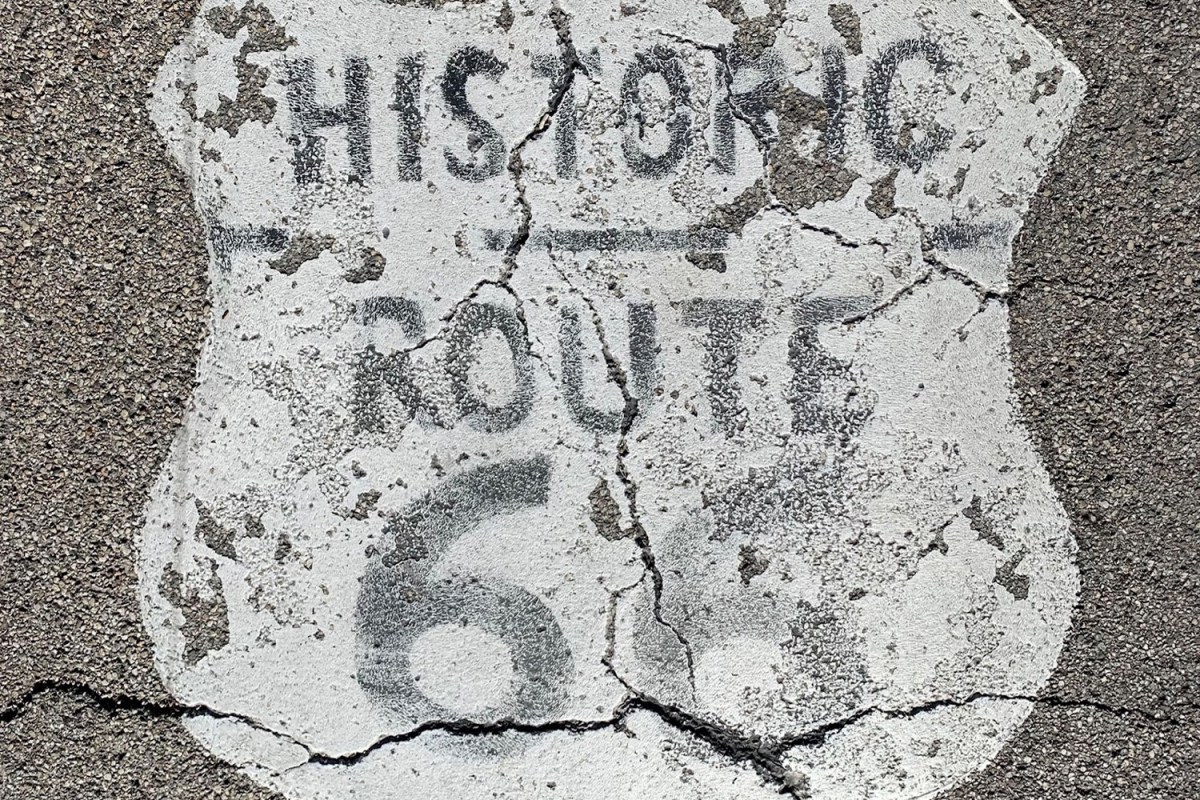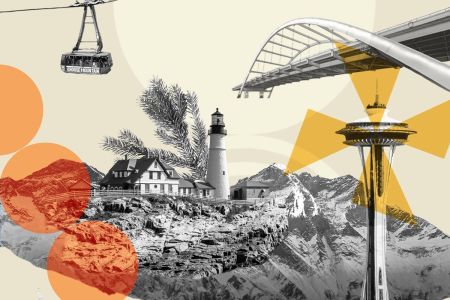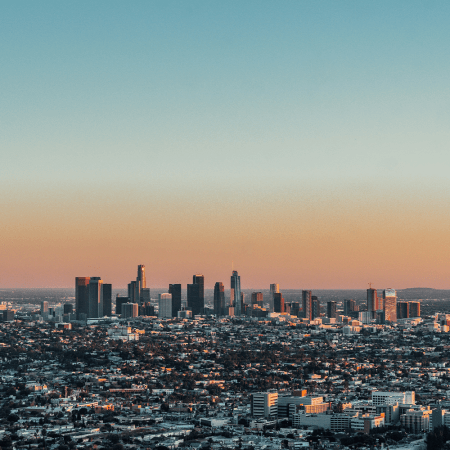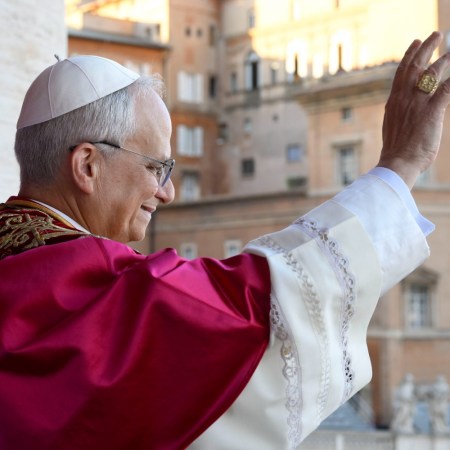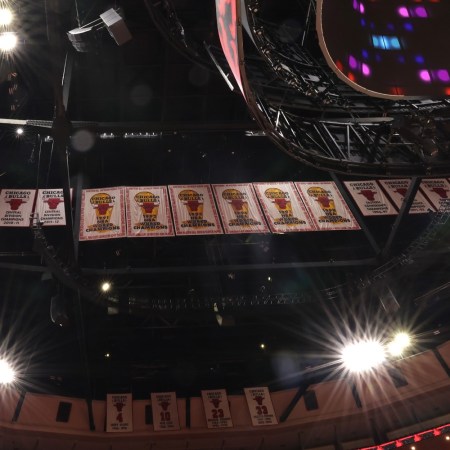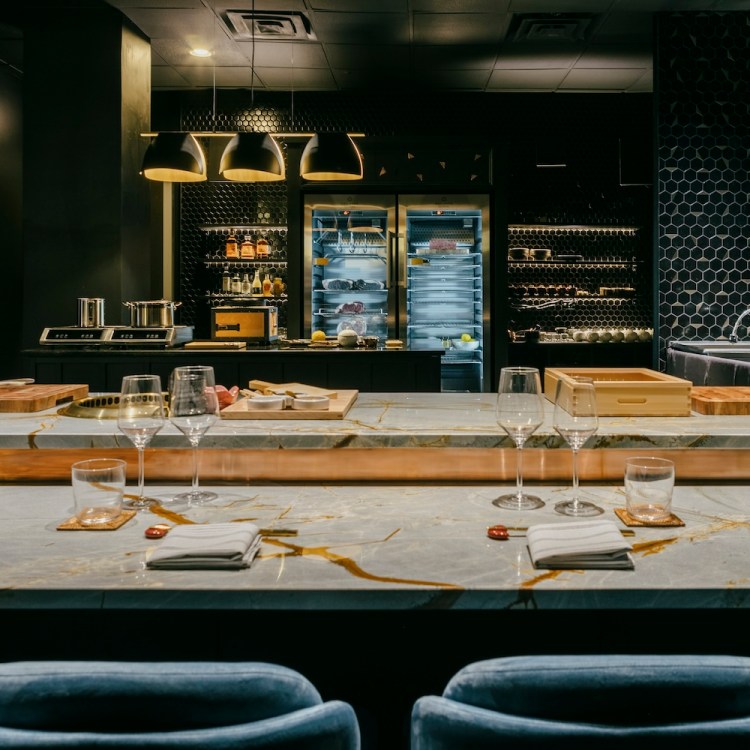Germany has the Autobahn. France has Route Napoleon. Iceland’s got the Ring Road. Rome had great roads in its day. Here in the States there’s the Pacific Coast Highway. I’m no expert on the world’s highways and byways, but for sheer mythology, it’s hard to imagine a road more iconic than Route 66, which runs from my home city of Chicago to Los Angeles. By virtue of the creative work inspired by it alone, it’s a force to be reckoned with. TV? The adventure drama Route 66 ran for 116 episodes (although, interestingly, the show referenced the road only fleetingly on screen). Literature? John Steinbeck’s classic Grapes of Wrath featured the Joad family traveling west along the road, and the author christened the route “The Mother Road.” Music? “(Get Your Kicks) on Route 66” was a hit in 1946 by Bobby Troup and has been successfully covered by Nat King Cole, The Rolling Stones, Chuck Berry, Them, Depeche Mode and scores of other artists. Movies? No less a blockbuster than “Cars” drew its inspiration from Route 66.
I’ve personally seen Route 66 signs at various times during my travels, but never really paid much attention, save for subconsciously humming the song whenever I’d seen that classic emblem. I knew the road started close to my home outside Chicago, and I wondered if I could put together a one-day road trip that would be worth sharing. But before I get to that, I had to answer a key question.
What Is the enduring appeal of Route 66?
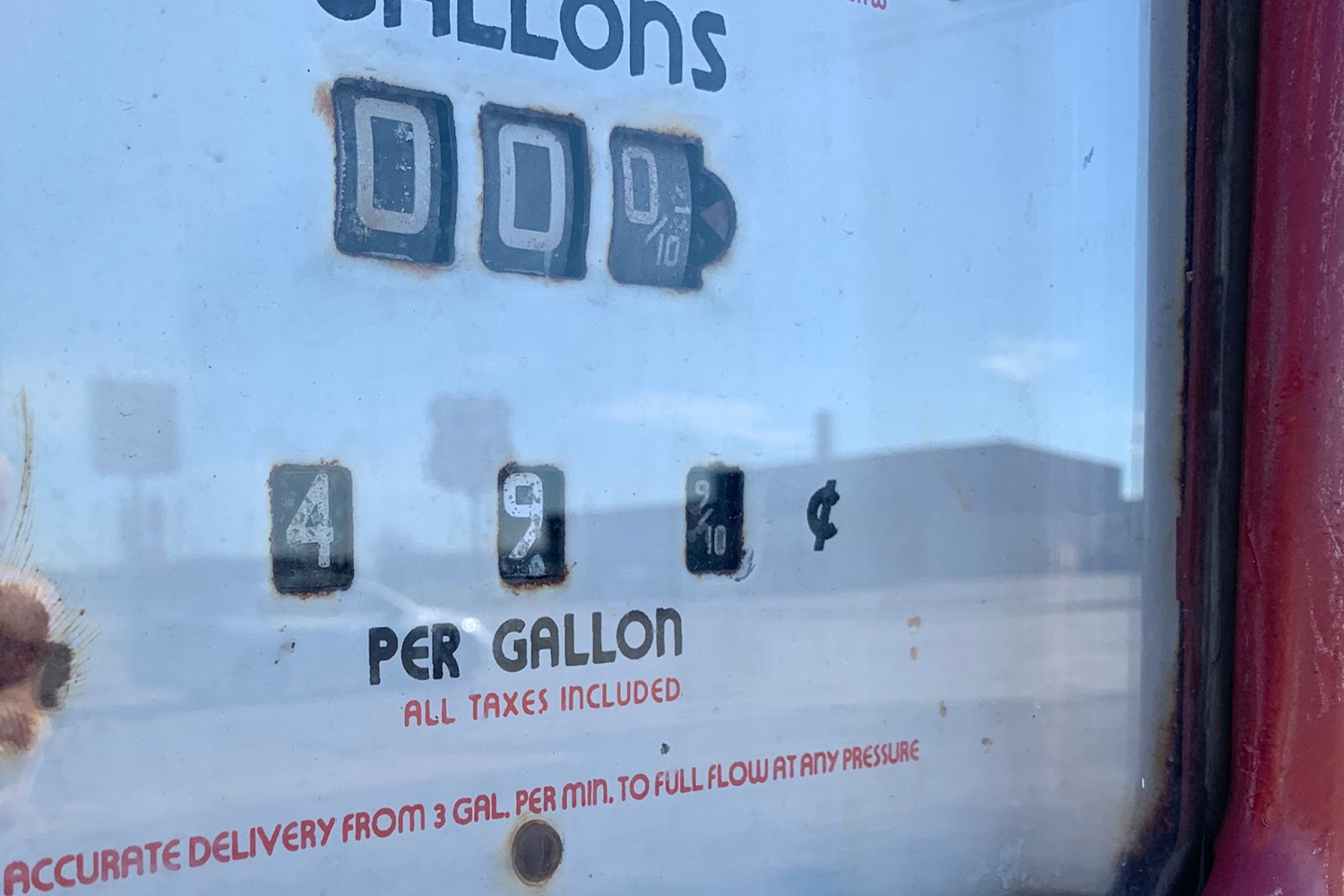
To understand why the road has meant so much to America, you need to go back to the 1920s, to a time when Model T Fords were populating driveways from coast to coast and the American love affair with the automobile — and the freedom it brought — was beginning to grip the American consciousness. Traveling from coast to coast at this time was a daunting task of bouncing from one small “auto trail” to another. Some of these trails were prior stagecoach routes and many were unpaved. Legislation for a public highway system emerged in 1916, and Congress enacted a highways act in 1925. For its part, Route 66 was intended to link large and small towns to a system of mobility and commerce. It was decreed one of the first U.S highways in 1927. The nearly 2,500-mile road did in fact link much of the country together, connecting the Windy City to Los Angeles through eight states by way of hundreds of small and medium-size towns like Dwight, Bloomington, St. Louis, Oklahoma City, Amarillo, Gallup, Winslow, Flagstaff, Needles and Barstow. Unlike the interstates to come, the route often wended its way straight through these towns, earning Route 66 the apt nickname “America’s Main Street.” With the birth of Route 66, Americans could easily meet each other and experience the country’s diverse terrain from Midwestern farmland to the Mojave Desert to the Pacific Ocean. It opened economic opportunity to those who lived along its path, and they in turn opened gas stations, restaurants, motels and attractions. For families like Steinbeck’s Joads escaping the Dust Bowl, Route 66 also provided the hope of a better life out West.
If optimism and opportunity marked the initial phases of Route 66, the story took a significantly darker turn after 1956, when the “bigger and better” Interstate Highway System effectively cut Route 66 off at the knees. Huge multi-lane interstates were built on parallel paths, bypassing the small towns that had prospered for decades with a steady flow of Route 66 travelers. The road was officially decommissioned in 1985, and much of it fell into disrepair, crumbled, became frontage roads or turned into rural roads or alternate business routes. (Route 66 has been experiencing a slow but consistent renaissance with historic designations, which is a story for another day.)
The perfect one-day trip on Route 66
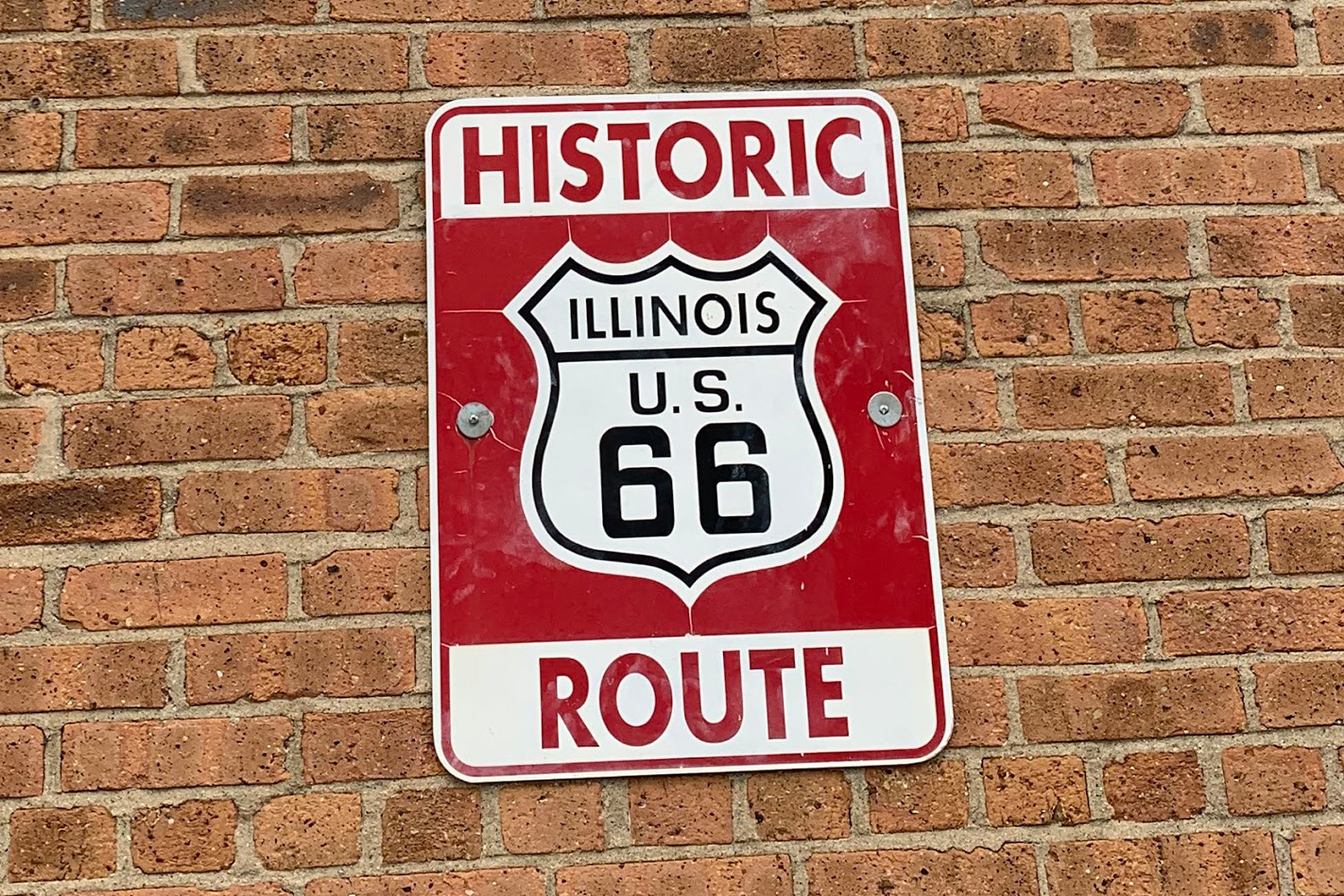
As I set out to plan a single-day adventure, the first thing I did was consult Google Maps, assuming there would be a way to somehow pull up an itinerary. (It’s Google, right?) There were some user-created maps, but nothing that was doing the trick. The route was decommissioned after all. Next idea: pull the dog-eared atlas out of my car’s trunk. Its print was very small and not really user-friendly. So I hit the app store and found a great application I’d recommend to anyone planning a Route 66 trip: The poetically named Route 66 Navigation. I have some small quibbles with it, and it required a $19.99 subscription, but I found it very accurate as a map and extremely helpful in pointing out key sights along the way.
Next hurdle, I needed to choose a path that would allow me to make it down and back in time for dinner at home. Since I live north of Chicago, I selected Dell Rhea’s Chicken Basket in Willowbrook as my first stop. I planned to be there by 8:30 in the morning. From there I would follow Route 66’s path to Bloomington, IL. To save time, I’d hop I-55 home, and try to be at my dinner table by 7:30 pm.
Section one: Willowbrook to Gardner
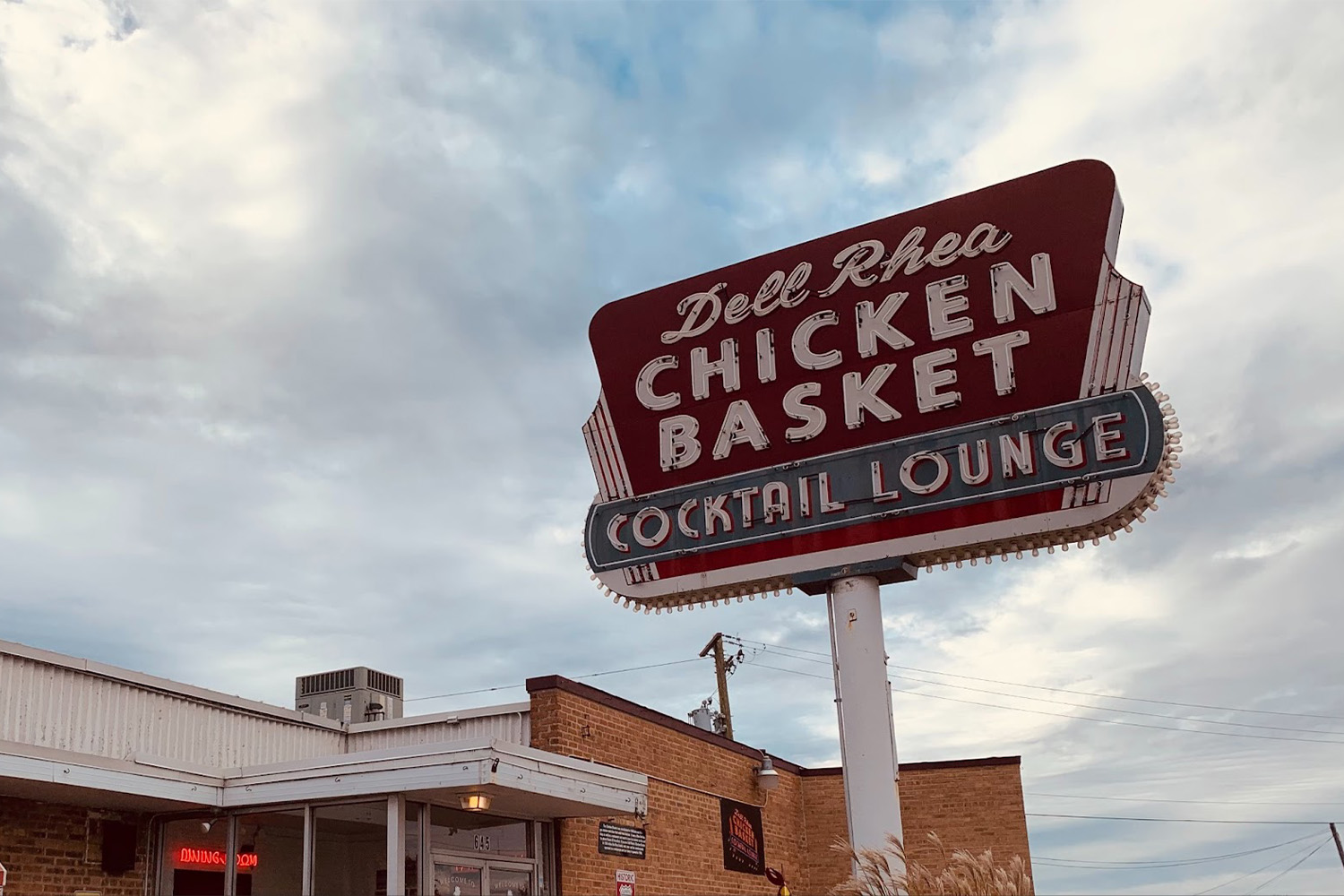
The Chicken Basket is an interesting place to start, because in many ways it’s Route 66 personified. It’s immediately clear that Interstate 55 cut this establishment off from most of the world. It sits on an orphaned branch of Route 66 in a quasi-industrial zone. But it retains its neon-hued charm and hundreds of positive Yelp reviews as proof it has thrived against the odds through the years. Sadly, at 8:30 in the morning it was not yet open. More on this later.
From Dell Rhea’s I headed south toward Joliet, with its famed prison. You quickly begin to see relics of a bygone era like Dick’s Towing Service and the pint-sized Rich & Creamy ice cream shop. In short order, the scenery opens up and the road courses through farmlands with modest Illinois-style elevations and Midwestern vistas. You’re immediately aware of how narrow the road is, with just two lanes overall and minimal shoulders. With some imagination, you can also start to imagine what this stretch would be like dotted with ancient Model T and Model A Fords or mid-century General Motors cruisers.
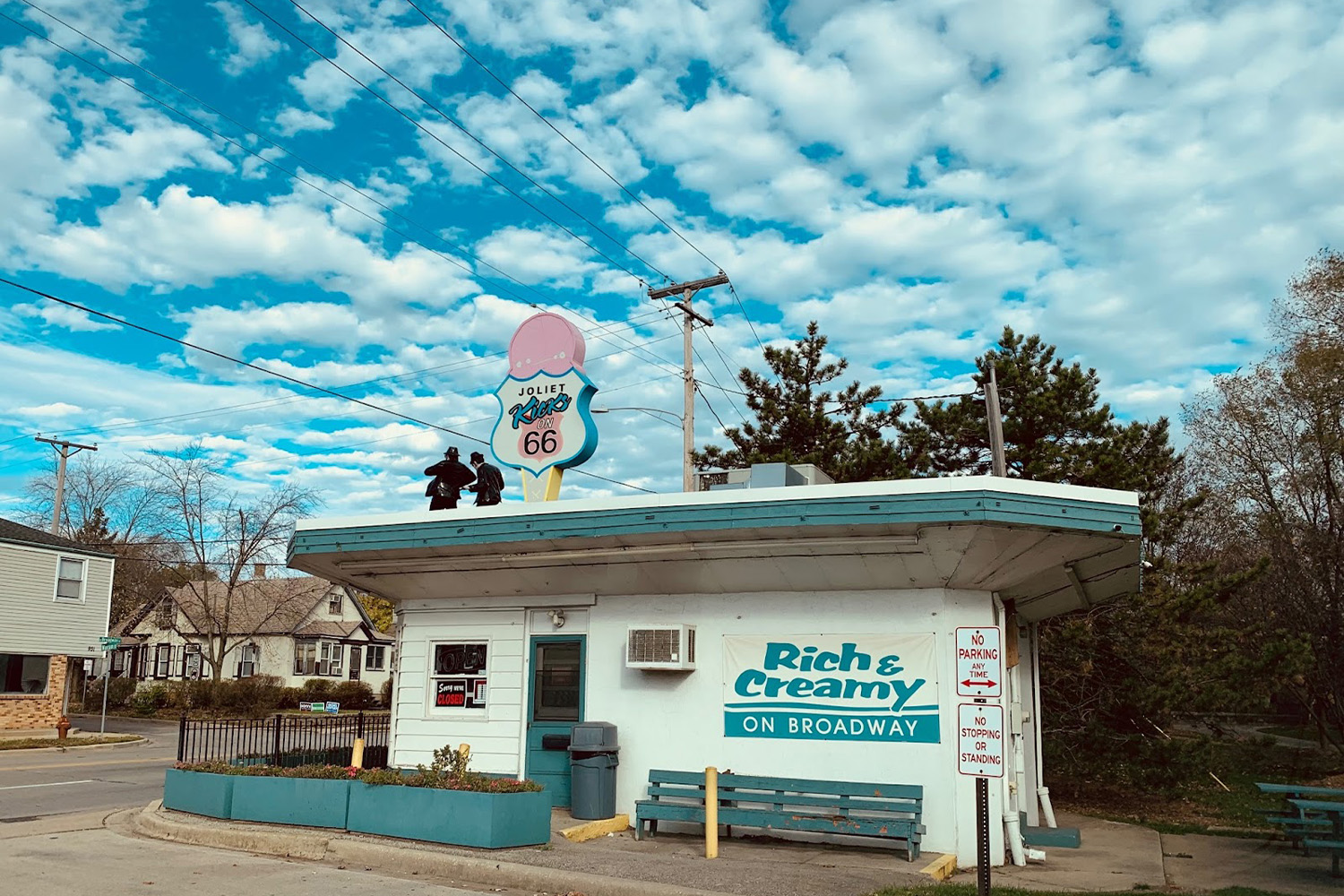
In Elwood you pass the Route 66 raceway, which features a dirt oval and a quarter-mile drag strip, conjuring up thoughts of Lightning McQueen and friends. Shortly thereafter, there’s a stretch of the old highway (called an “alignment” in the parlance) that tracks along through a desolate field with old style power lines standing sentry. It’s just a brief little jog, but it relays the lost highway vibes in immediate and tangible ways. It was also around this point that I realized that this drive was going to require some ambition on the part of the driver. Route 66 — at least in Illinois — is not a carefully curated museum stretch. Far from it, the old historic road appears in small fits and starts, and it quickly fades from view into more modern environs, often like a fleeting dream.
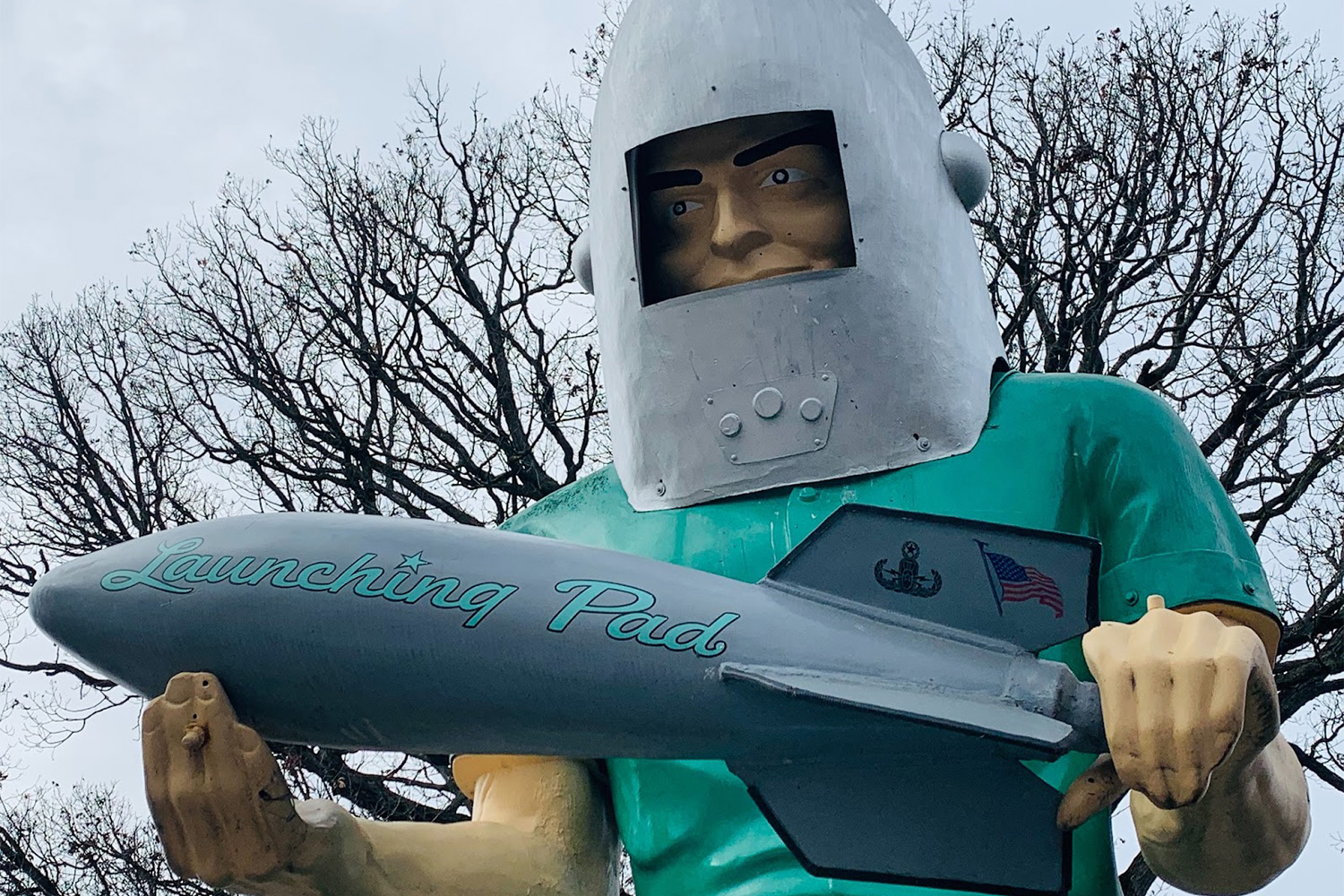
At about 10:30am I pulled into the parking lot of the Launching Pad, a diner that sits in the shadow of a towering fiberglass statue of a spaceman called the Gemini Giant. I got out of my car and was again dismayed to find the establishment closed until 11. As I was standing, a gentleman walked up to me to ask if I, too, was waiting for the restaurant to open. He and his wife (and dog) were making the trek all the way to Santa Monica. Just then, another car pulled up and a husband and wife emerged. They had flown up to Chicago from Florida and were also making the trip all the way to California. The husband had just turned 66, and it was his numerically significant birthday present. At this moment, I understood that Route 66 is far more than a tourist trip. It is a magnet for people who are seeking something: meaning, romance, perspective, uplift. It’s a moving community. It’s a pilgrimage. Even in the off season (early November), travelers were converging from far and wide, drawn by the road’s gravitational pull. Mindful of the time, I hopped back in my seat and continued south.
Wilmington’s main street was lined with numerous antique shops, and I was intrigued by the bounty there. But I had a suspicion that the further I traveled, the more the road would reveal, so I pressed down on the accelerator and made my way to Gardner. Outside of town at the side of the road was a sign that read “The Riviera” next to stairs leading nowhere. I pulled into the dirt lot and read about the former restaurant and speakeasy that burned to the ground. It was a “first-class” roadhouse that first opened in 1929 and served up white lightning during Prohibition and many decades of “good home cooked meals.” In Gardner itself, there’s a two-cell jail and what must be the world’s smallest diner (no longer open). It’s a small town with small but compelling sights.
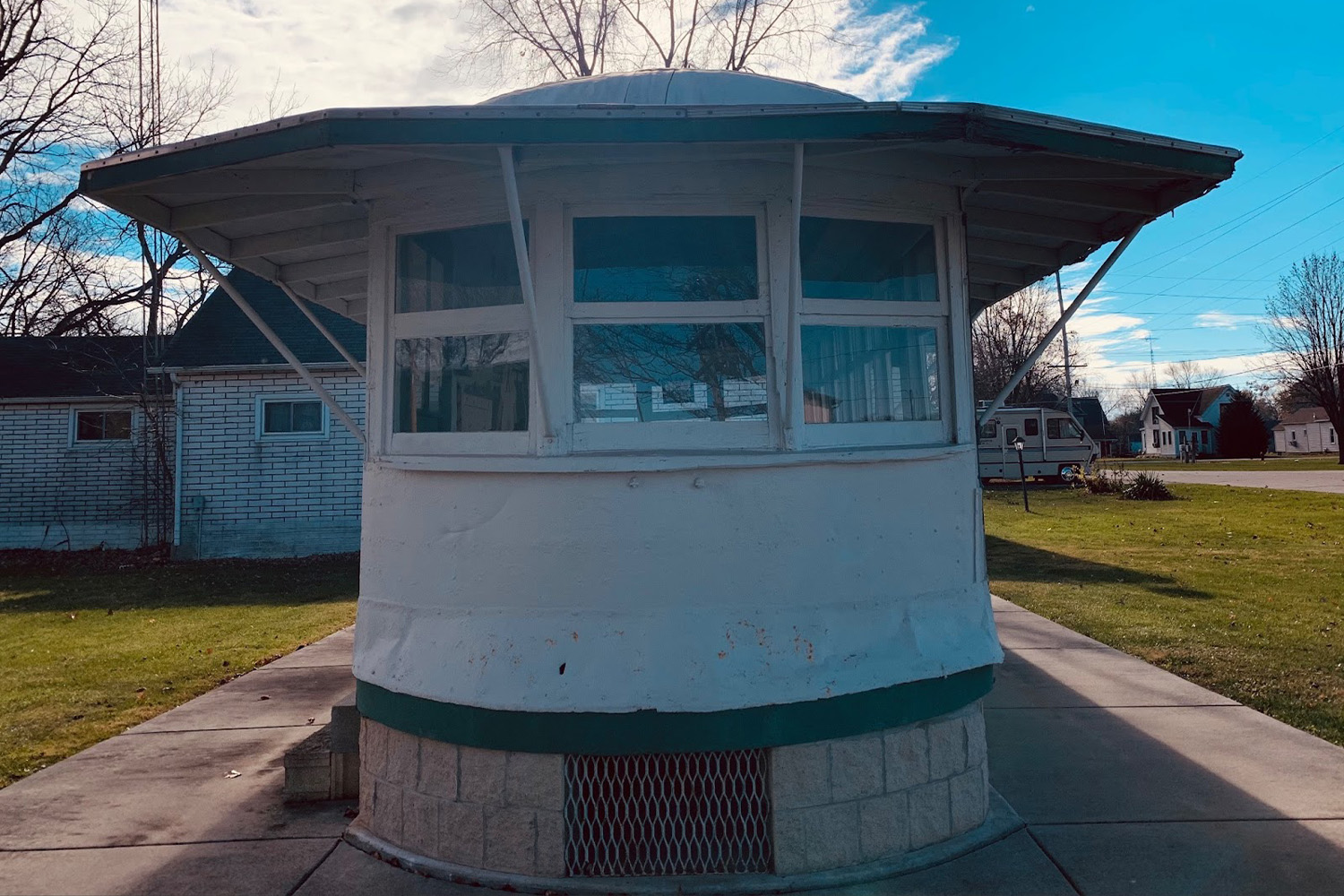
Section two: Gardner to Pontiac
Dwight is a town I’ve seen from the interstate and Amtrak for years traveling between Chicago and St. Louis. From that vantage it seems to appear out of nowhere, but when you approach it from Route 66 it makes more sense. It’s yet another town on America’s Main Street, at one time fairly prosperous with a bank architected by none other than Frank Lloyd Wright. It’s here that I come across my first fully restored service station: Ambler’s Texaco. With its white clapboard siding, white columns, and bright red pumps, it appears lifted straight off a postcard from Middle America. The station was open longer than any other along Route 66. Oddly, it was serving customers for 66 years, from 1933 to 1999.
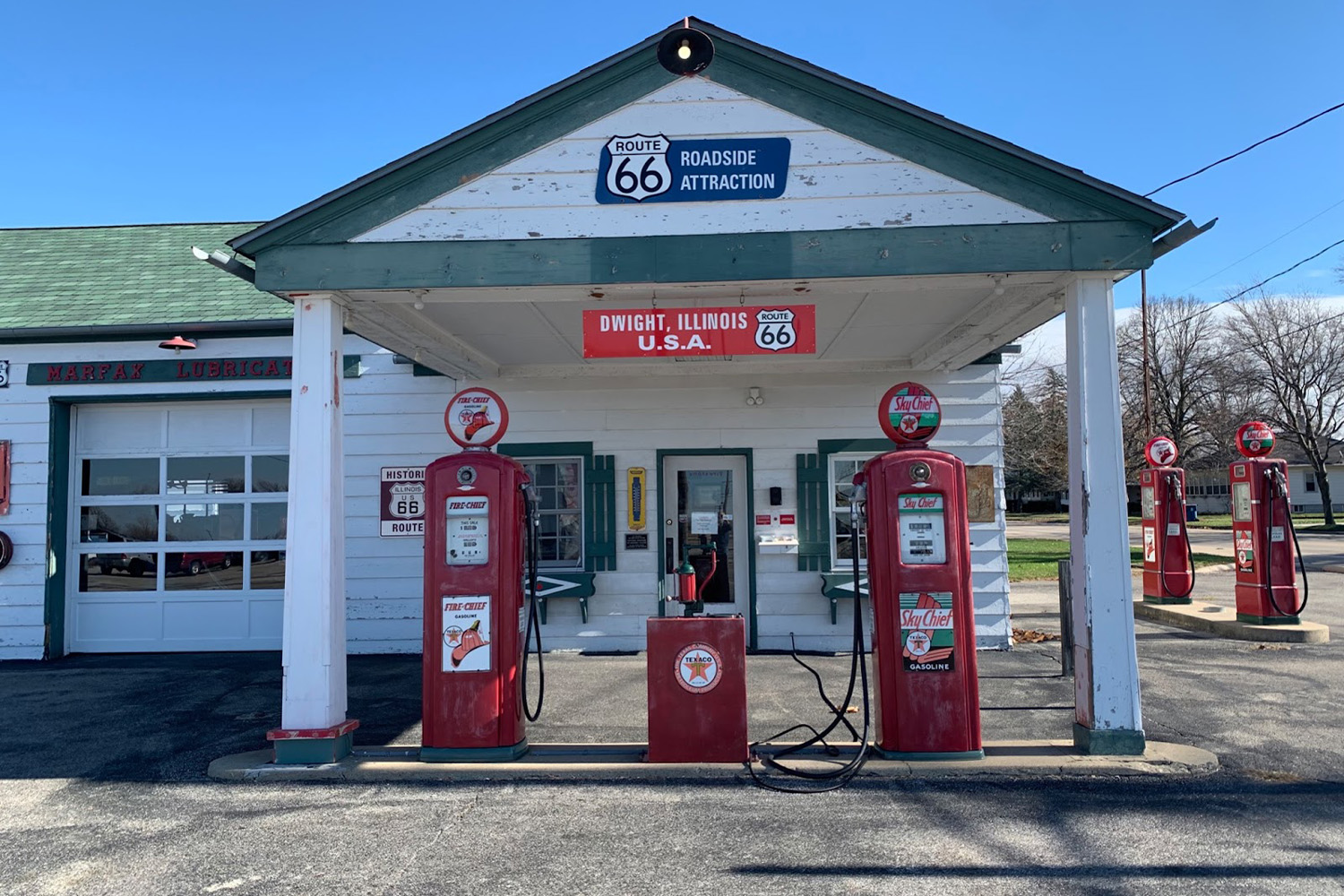
A short way down the road in the town of Odell, yet another beautiful service station rises from the shoulder of Route 66 just a stone’s throw from the soaring red brick St. Paul’s Cathedral. The white brick and shake shingle covered Standard Station with its arched entryway and double service bays manages to elevate the humble repair and fueling station to a work of art and inspiration. It struck me that these nearly 100-year-old waystations communicate comfort and confidence in equal measure, which seems to fit the times when traveling in a primitive vehicle was often a white-knuckle affair.
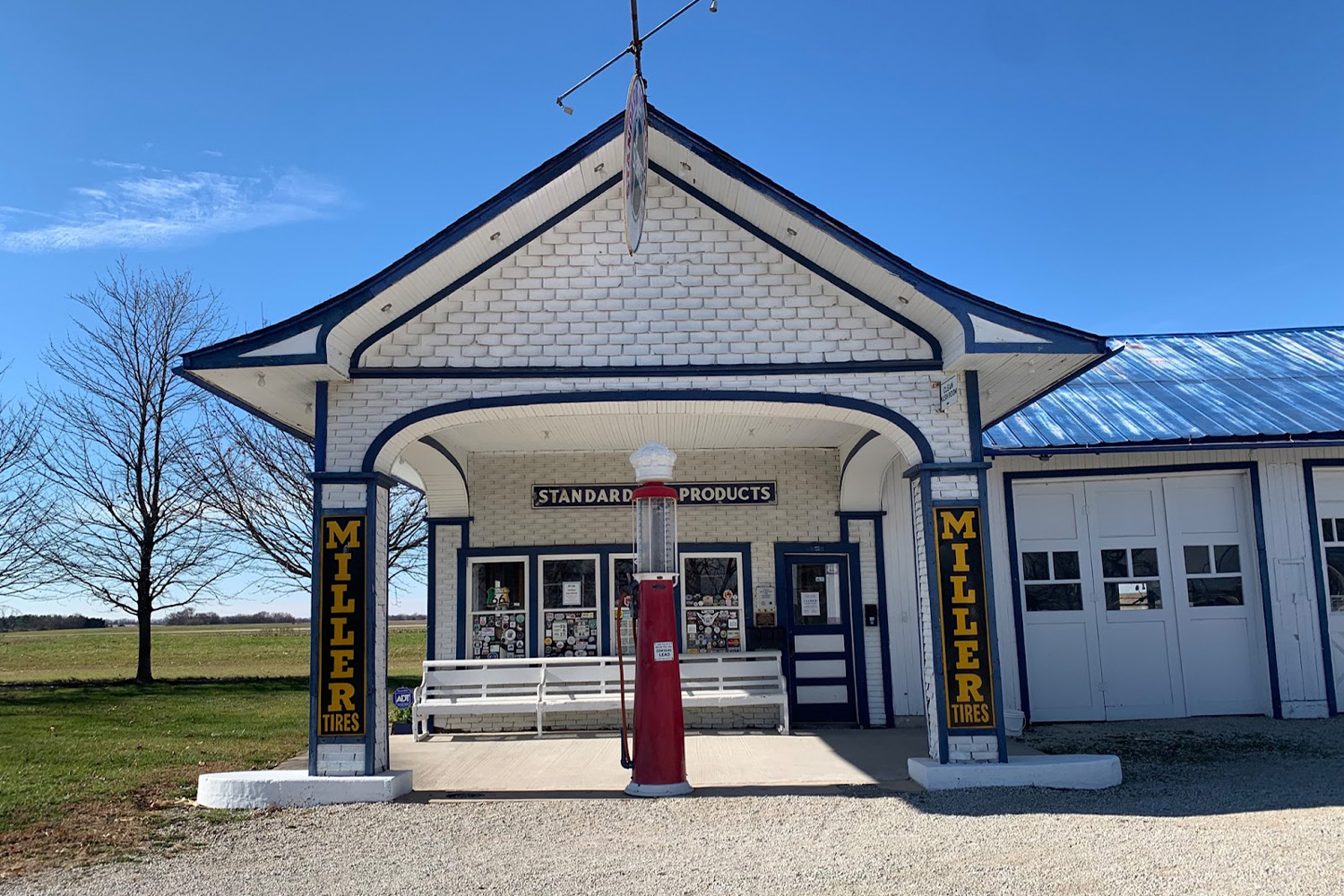
The town of Pontiac is one of the larger stops (relatively speaking) between Joliet and Bloomington. Large painted Route 66 murals adorn several of the buildings downtown, and I promptly navigated to a three-story museum that houses the Route 66 Association Hall of Fame and Museum. I’m such a neophyte that I hadn’t understood the role Bob Waldmire had played in the myth of the Mother Road until I saw museumgoers staring into his VW microbus with reverence and awe. The museum docent, Rose, happily led me and some other patrons around the first floor, pointing out Bob’s iconic artwork and telling us stories about the man, his family, and his life on the road. (For more on Bob’s life and legacy go here.)
Three Cities, Two Airports and a Rental Car: Open Jaw Your Way to the Ultimate Summer Road Trip
To level up your road trip, bookend it with excellent big-city adventures woven together with a rental carThere was a Milwaukee couple at the museum who’d been on the route for nine days, doing a loop from Chicago to Oklahoma City. They said they’d had so much fun they were going to fly to Oklahoma, rent a car and finish out the trip at a future date. I asked the husband what the best thing he’d seen was and he said, without skipping a beat, “the people.” I’d expected him to mention some theater or diner or service station, so the answer caught me a little off guard. But as the day’s events started sinking in, I understood exactly what he meant. There is a connection between the travelers on Route 66 and the proprietors and artists who’ve made the ancient highway their home. It was a friendliness I felt on the third floor of the museum, where Vietnam Veteran David Estes runs the extremely moving Livingston County War Museum founded by his late father, Dal. And the same feeling I got when I stepped into Edinger’s Filling Station for some fried cheese curds and genuine conversation before heading out of town.
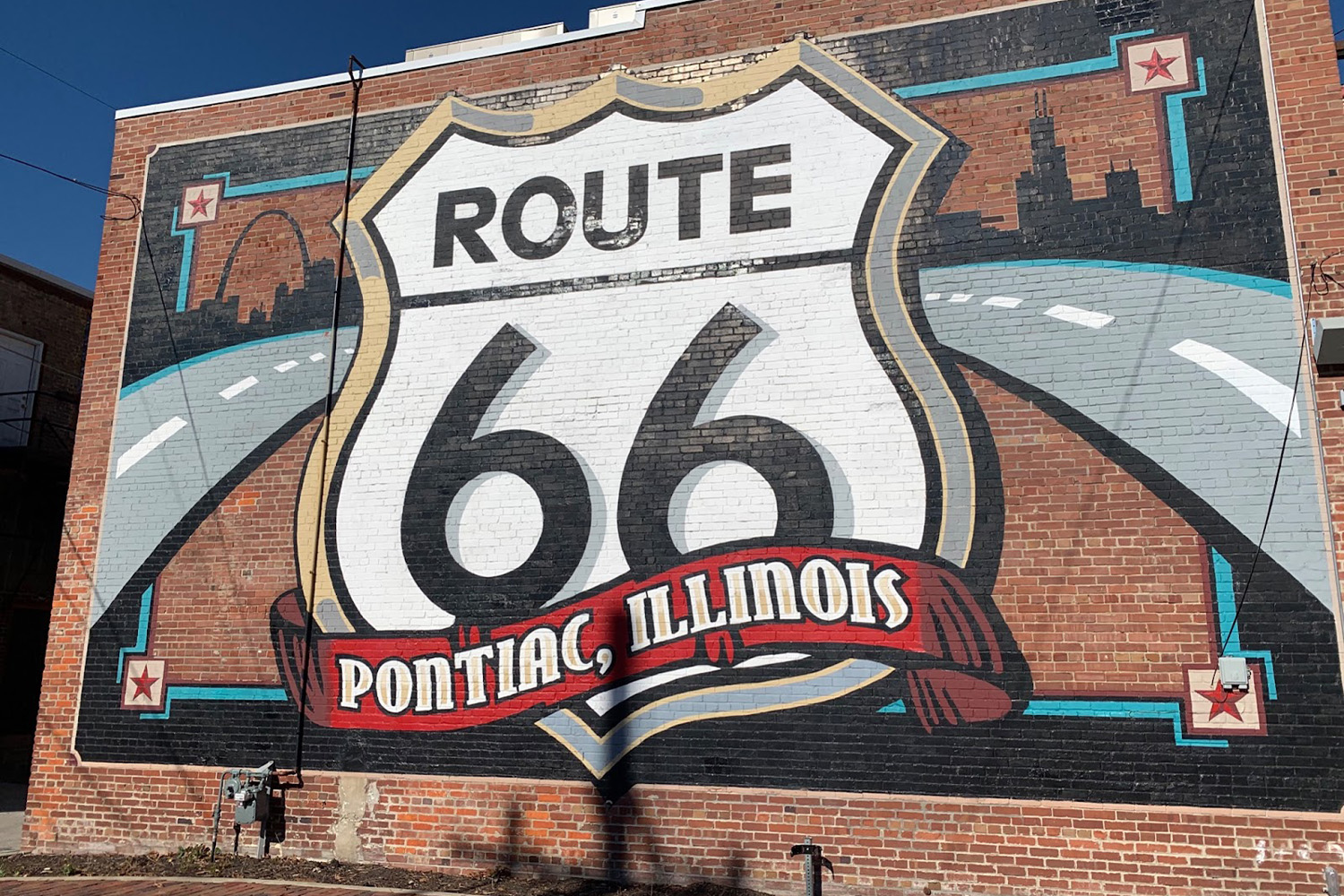
Section three: Pontiac to Bloomington
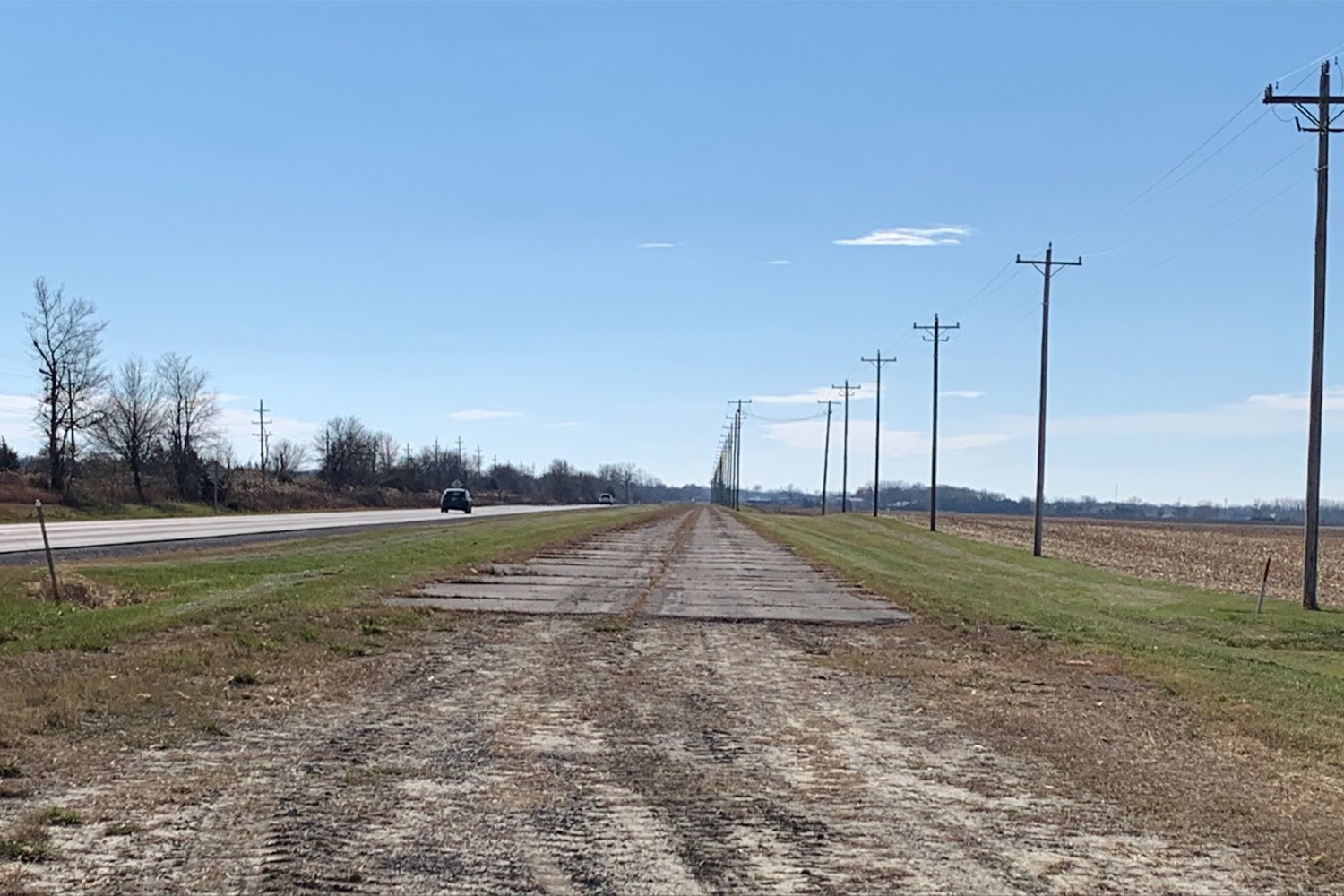
At various places around Chenoa and Lexington there are portions of the old route where you can sit at a picnic table atop the old asphalt or spy an old and crumbling bridge. On Memory Lane, you can hop onto a mile-long spur with old billboards and famous Burma Shave text signage. Deadman’s Curve in Towanda serves as a reminder of the many lives lost on Route 66, which ran through populated areas with less than ideal lighting and narrow passage — one of the reasons for the public backing of the Interstate system.
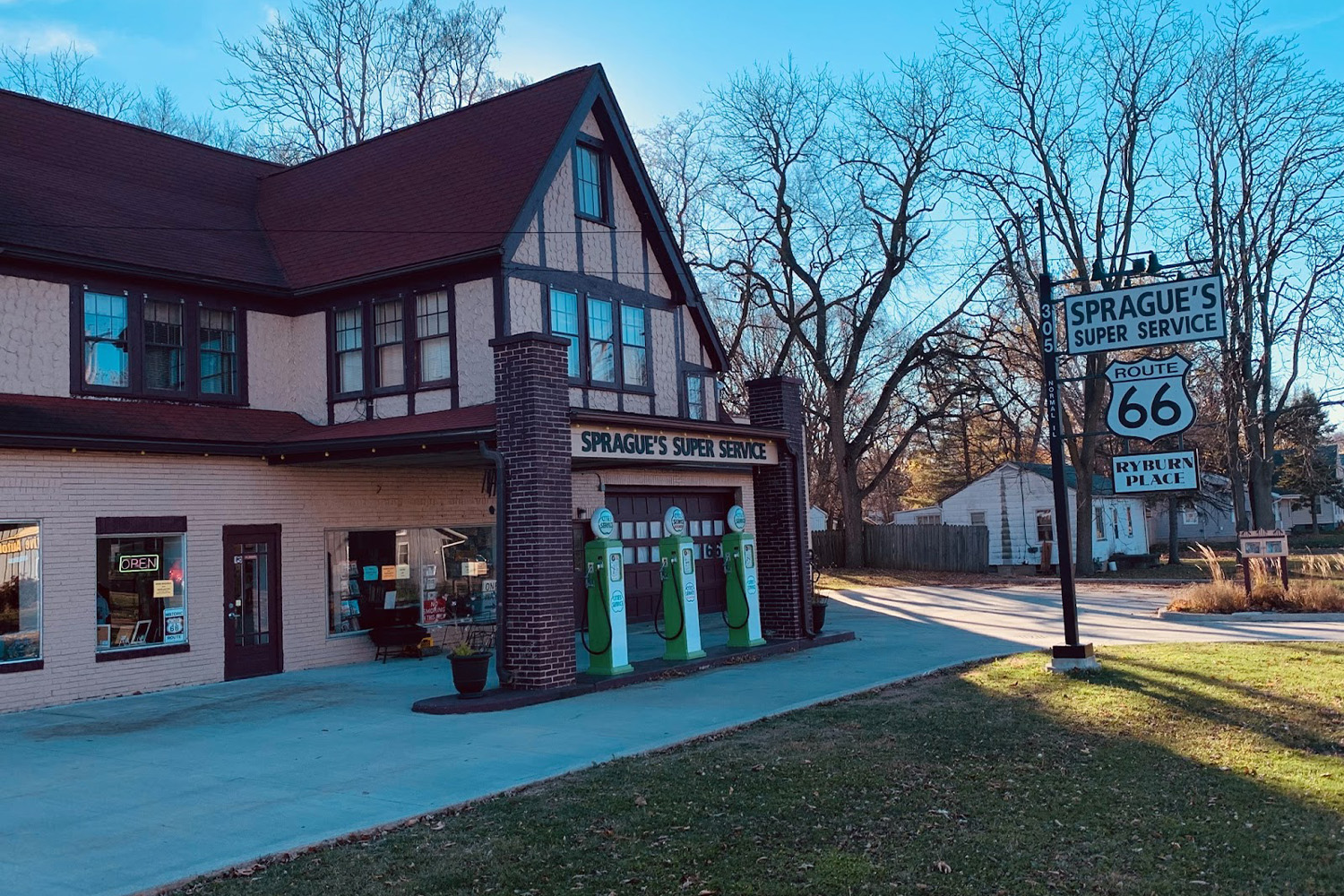
At this point, as I approached my destination of Bloomington-Normal, I found the sights thinned out a bit. By the time I reached the Tudor-styled Sprague’s Super Service station on Pine Street, I was ready for a meal and a break to absorb all I’d seen. I grabbed a calzone at campus hangout D.P. Dough with my brother-in-law, who calls Bloomington home, and tried to relay what I’d seen and witnessed on my 150-mile journey earlier that day. I pulled up pictures on my phone, told him about the people I’d met, and tried to put my finger on what it had all meant. We finished the meal and walked out past the art deco Normal Theater, founded in 1937. It is yet another example of stunning beauty by the roadside. A temple built for entertainment instead of religion. I thought about my adventure from the Chicken Basket to the Normal Theater. There wasn’t much that was normal about it. The places and people I’d met seemed to be undeniably American, but also completely not of the America we know today. These were scenes from another time and place, imbued with a certain timeless quality. And they were interlaced with modernity — glimpses of the Interstate in the distance, a Wal-Mart or a Subway. I had the feeling of watching a movie where every other scene was missing and I was struggling to follow the narrative.
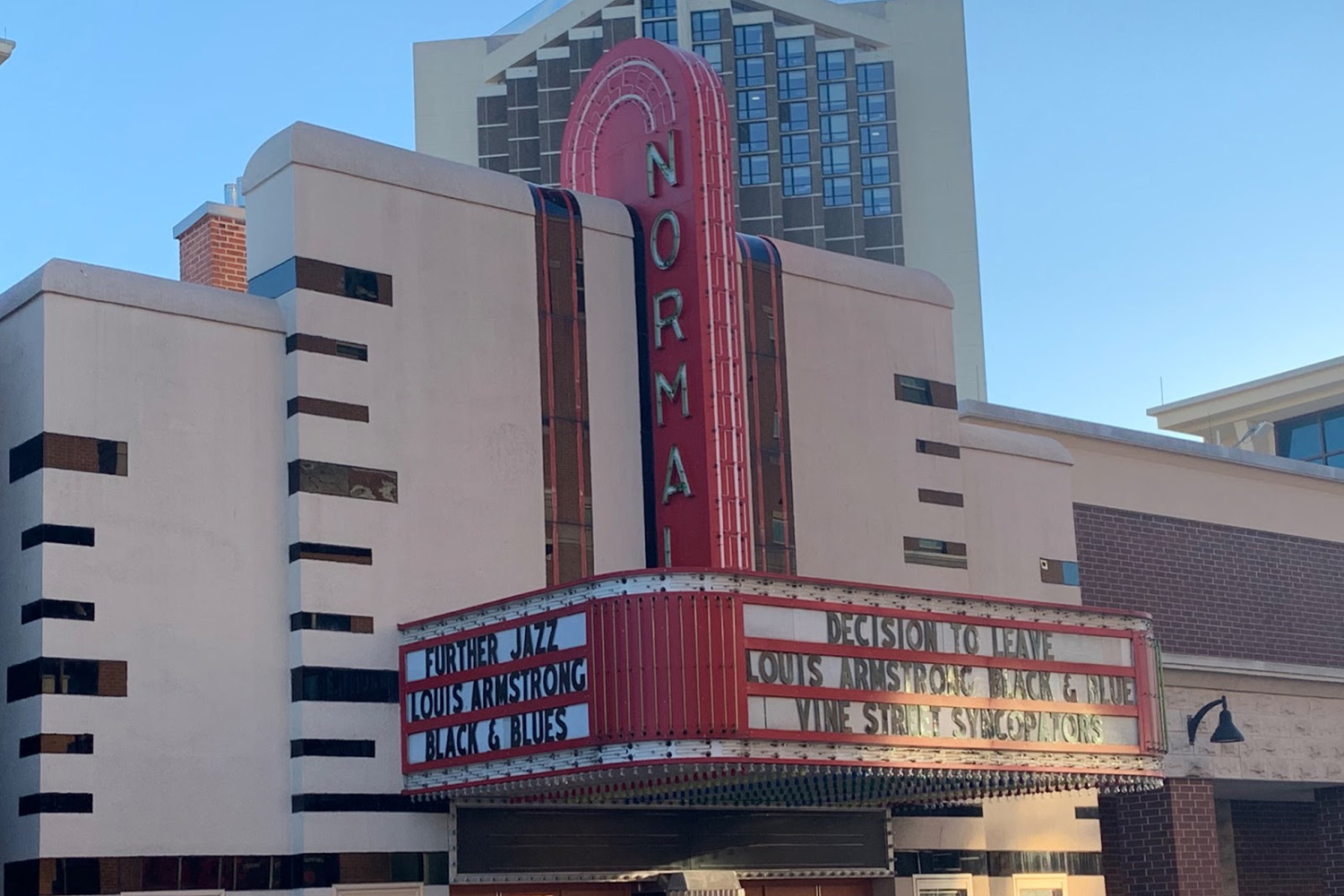
Soon, the sun was dropping and the temperature was falling, and I needed to head back north. As planned, I hopped onto I-55 to cruise quickly toward Chicago. The trip home was roughly two-and-a-half hours, versus the six hours coming down. At about 6 pm I passed the Chicken Basket in Willowbrook again. Since I had to be home, I didn’t stop, but for the reader I’d urge you to pull in for dinner (reservations needed) to round out this day trip. By coincidence, I had the chance to eat there a couple days later and it exceeds its reputation for exceptional fried chicken and mouth-watering comfort food. It would be the perfect way to cap this Route 66 day trip from Chicago.
I pulled into my driveway north of the city, stopped my car and sat in the silence. The Route had made its impression. This particular leg of the journey is, admittedly, not for everyone. To my understanding, the parts of Route 66 further out west are considerably more beautiful. For anyone expecting a continuous Instagram feed of sights, the ratio of smiles to miles may not be sufficiently high. But for adventurous souls with a penchant for history and a hunger for a unique experience, it’s well worth the time and tank of gas needed to get you there.
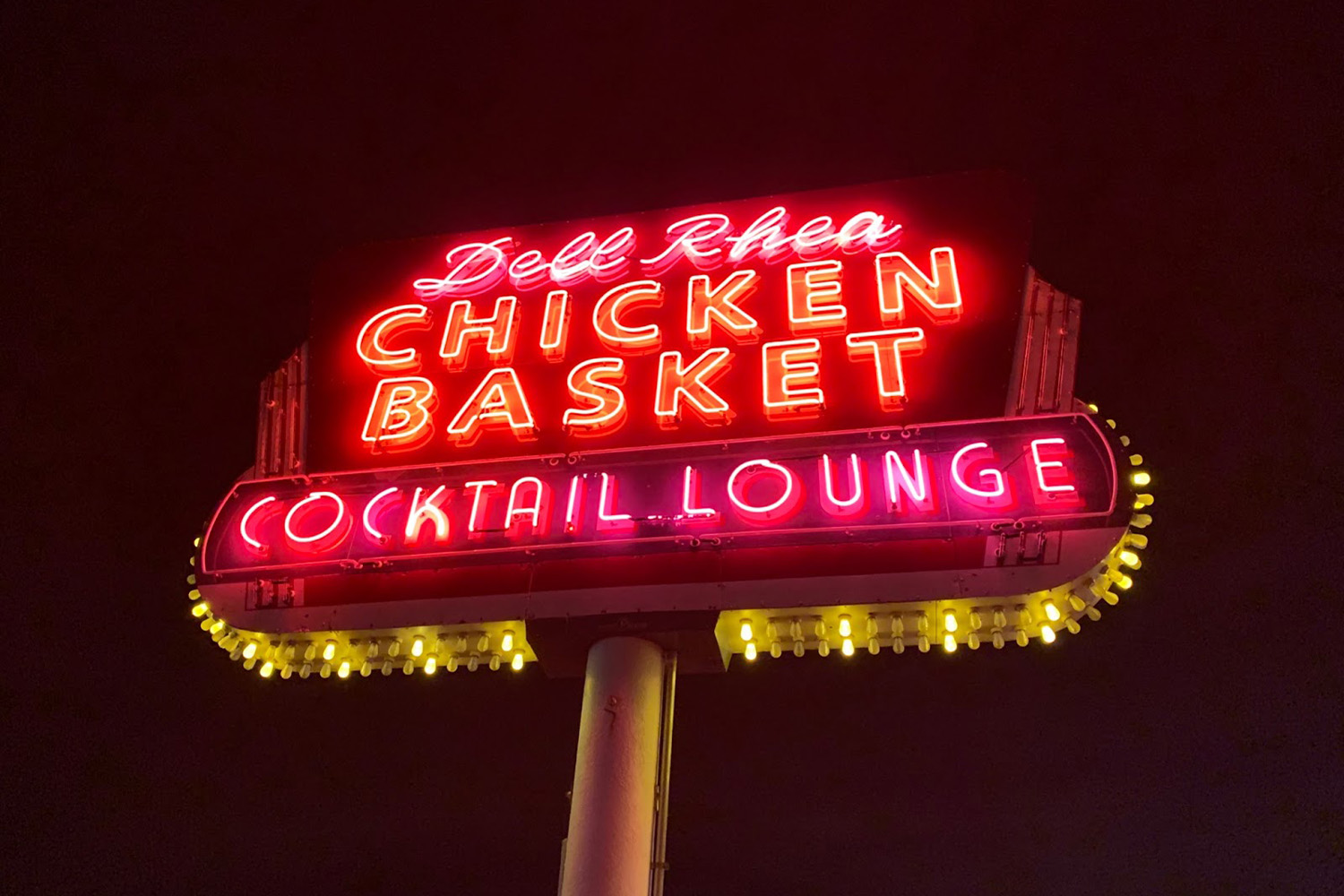
You’ll get your kicks, but more than that, you’ll gain a much deeper appreciation of American culture and the road that led us to where we are today. When you see travelers stop their cars for a chance to walk upon the crumbling blacktop and dirt, you will take away your own meaning. For me, it was proof that people long to be connected to one another. To know they are a part of the American tapestry. It was evidence that no matter how interstates and the information superhighway serve keep us apart, we’ll find ways to be together.
For an alternate itinerary: Consider ending your southbound trip in Pontiac. While you miss out on some cool sights and Bloomington-Normal, you’ll be able to spend more time in the museums and then head back north on I-55.
This article was featured in the InsideHook Chicago newsletter. Sign up now for more from the Windy City.
